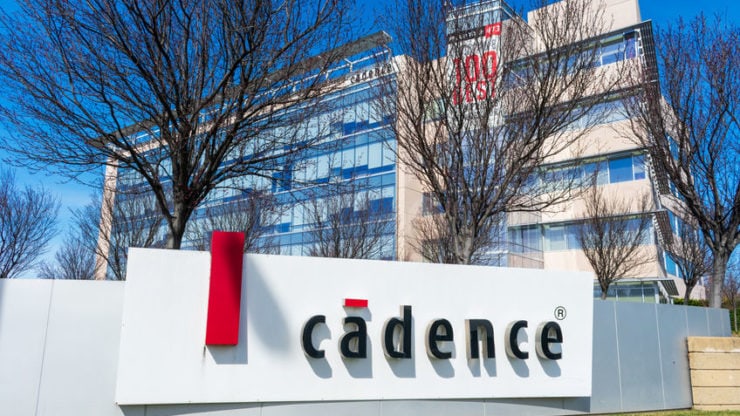Cadence Design Systems Inc. (NASDAQ: CDNS) has experienced a notable downturn recently, dropping over 23% in the past month, yet analysts at Piper Sandler see this as an opportunity.
Analysts remain optimistic
Upgrading the stock from Neutral to Overweight, they’ve maintained a bullish $318 price target, suggesting a potential 25% upside.
This view is largely based on the belief that the recent dip offers a lucrative entry point into a robust software asset within the semiconductor sector.
Piper Sandler analyst, Clarke Jeffries, highlighted that despite the tepid Q2 performance contributing to this decline—amid broader industry uncertainties—the company is poised for recovery.
Jeffries pointed to specific challenges like the ongoing transition in Verification technologies and pressures from the Chinese market, yet remains optimistic about the ramp-up in Verification deliveries and subsequent financial improvements in the coming quarters.
Analysts at Baird too recently reaffirmed their confidence in Cadence, maintaining an Outperform rating but slightly adjusting their price target from $341 to $338 following the Q2 earnings release.
They attributed this slight adjustment to a recalibration of expectations but foresee stronger estimate revisions in FY25 which could propel the stock further.
Cadence’s Q2 earnings
This sentiment is underpinned by Cadence’s Q2 earnings, where it surpassed expectations with a non-GAAP EPS of $1.28, outpacing estimates by $0.05, and a revenue of $1.06 billion that exceeded forecasts by $20 million.
The company has benefited from robust demand across AI, hyperscale, and automotive sectors, bolstering its financial stance.
Looking at Cadence’s financial health more broadly, the company reported a resilient second quarter with a $6.0 billion backlog, signalling strong ongoing demand for its offerings.
The fiscal outlook for 2024 looks promising with projected revenues ranging from $4.60 billion to $4.66 billion and non-GAAP operating margins expected between 41.7% to 43.3%.
For the upcoming quarters, Cadence expects to earn between $1.165 billion and $1.195 billion in revenue. They also anticipate maintaining strong non-GAAP earnings per share, which highlights their ability to keep performing well financially even when the market is unpredictable.
Recent acquisition and competitive moat
Delving deeper into the fundamental operations of Cadence, the company’s prowess in the EDA sector is notably reinforced by its innovative product offerings and strategic acquisitions, like the recent BETA CAE systems purchase.
This acquisition not only diversifies Cadence’s simulation portfolio but also enhances its footprint across several critical sectors including automotive and aerospace, potentially adding $40 million in revenue for FY24.
Such strategic moves are pivotal as Cadence capitalizes on growing demands in the AI-driven semiconductor market, leveraging its Cadence.AI portfolio and next-generation hardware systems like Palladium Z3 and Protium X3, which are setting new standards in verification and performance.
The business outlook remains optimistic as Cadence continues to solidify its leadership in verification.
Its major partnership deployments and product innovations are expected to drive higher throughput and performance, crucial for AI chip design.
These advancements position Cadence favourably within the dynamic semiconductor industry, expected to grow significantly, fueled by increased R&D spend from key players in AI and other high-growth sectors.
From a valuation perspective, despite the recent stock price dip, at a forward P/E ratio of 42 Cadence still trades at a premium compared to its peers, reflecting high expectations embedded in its future growth trajectory.
With these aspects in mind, we now turn to the technical analysis to explore what the charts suggest about Cadence’s stock price trajectory, particularly in light of recent market movements and analyst upgrades.
This analysis will provide another lens through which to assess the potential investment opportunities in Cadence as it continues to innovate and lead in the semiconductor design space.
Long-term uptrend remains intact
Cadence’s stock has been a remarkable performer in the semiconductor sector, rising sixfold from its 2020 lows in the last four years.
What makes this performance truly remarkable is that the stock has exhibited much lower volatility than its peers in the semiconductor industry, which is highly cyclical.
CDNS chart by TradingView
Though the stock is experiencing bearish momentum in the short and medium term, its long-term uptrend remains intact, so existing shareholders who have bought the stock at lower prices don’t need to panic.
The stock recently found support above its 38.2% Fibonacci retracement from 2020 lows and this year’s high at around $241.
Investors who are bullish on the stocks like the analysts can buy it near $250 with a stop loss at 38.2% Fibonacci retracement at $222.
Traders who are bearish on the stock, but haven’t initiated a short position yet, must refrain from doing so at current levels because the stock has experienced a dramatic decline recently and the RSI on daily charts has reached oversold levels.
Any fresh short position should be considered only if the stock bounces back to above $280 or if it falls below $223.
The post Should you buy Cadence after the recent 23% drop? Piper Sandler thinks so appeared first on Invezz

